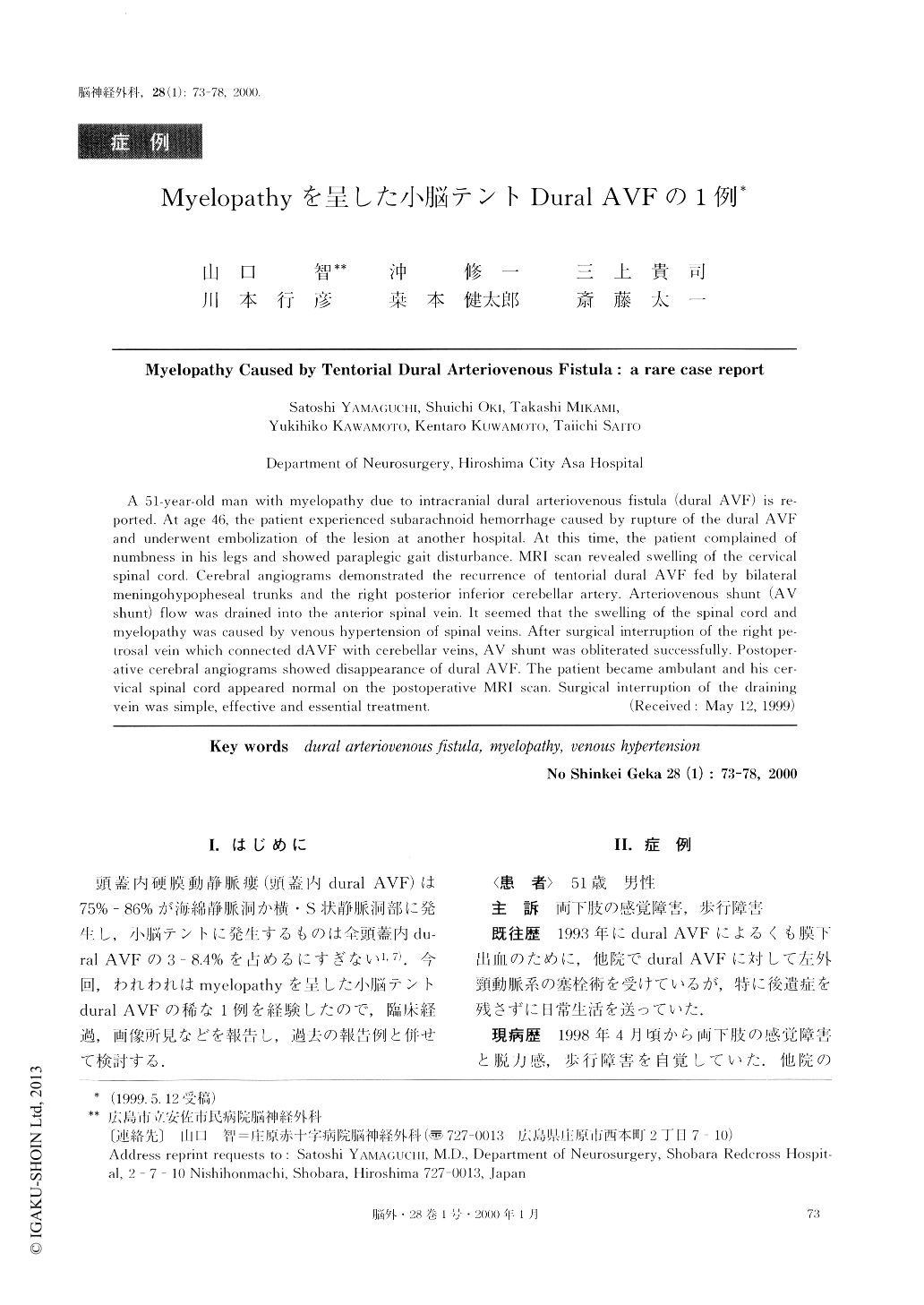Japanese
English
- 有料閲覧
- Abstract 文献概要
- 1ページ目 Look Inside
I.はじめに
頭蓋内硬膜動静脈瘻(頭蓋内dural AVF)は75%-86%が海綿静脈洞か横・S状静脈洞部に発生し,小脳テントに発生するものは全頭蓋内du-ral AVFの3-8.4%を占めるにすぎない1,7).今回,われわれはmyelopathyを呈した小脳テントdural AVFの稀な1例を経験したので,臨床経過,画像所見などを報告し,過去の報告例と併せて検討する.
A 51-year-old man with myelopathy clue to intracranial dural arteriovenous fistula (dural AVF) is re-ported. At age 46, the patient experienced subarachnoid hemorrhage caused by rupture of the dural AVFand underwent embolization of the lesion at another hospital. At this time, the patient complained ofnumbness in his legs and showed paraplegic gait disturbance. MRI scan revealed swelling of the cervicalspinal cord. Cerebral angiograms demonstrated the recurrence of tentorial dural AVF fed by bilateralmeningohypopheseal trunks and the right posterior inferior cerebellar artery. Arteriovenous shunt (AVshunt) flow was drained into the anterior spinal vein. It seemed that the swelling of the spinal cord andmyelopathy was caused by venous hypertension of spinal veins. After surgical interruption of the right pe-trosal vein which connected dAVF with cerebellar veins, AV shunt was obliterated successfully. Postoper-ative cerebral angiograms showed disappearance of dural AVF. The patient became ambulant and his cer-vical spinal cord appeared normal on the postoperative MRI scan. Surgical interruption of the drainingvein was simple, effective and essential treatment.

Copyright © 2000, Igaku-Shoin Ltd. All rights reserved.


